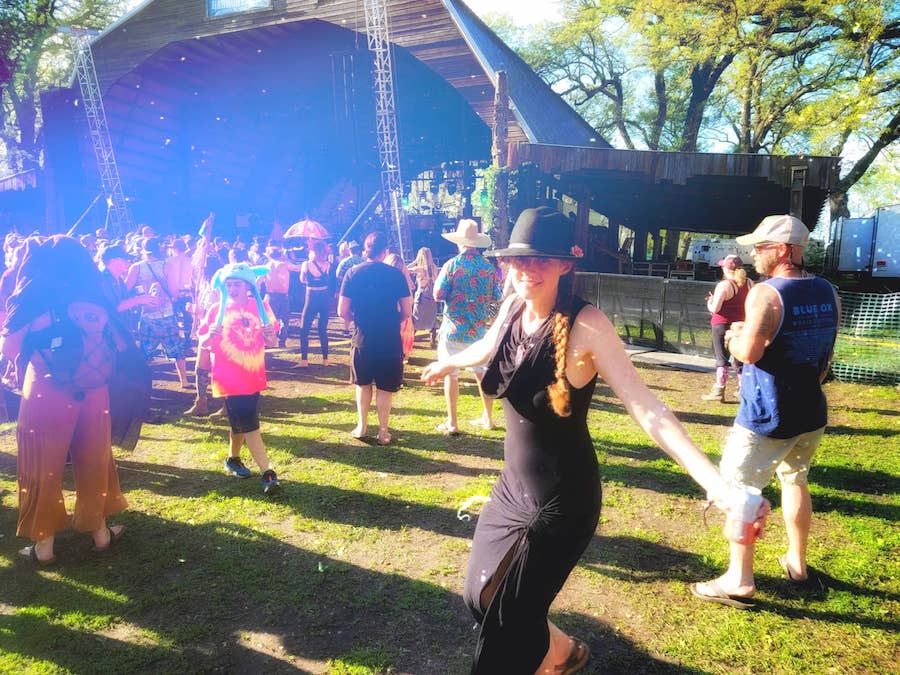Manual Therapy vs. Physical Therapy: What's the Best Approach?

Photo by Mathew Schwartz on Unsplash
When you're in pain, do you get a massage, do you get an adjustment, or do you just walk it off?
There's somewhat of a debate in these healing fields over what approach actually works. Many people believe that exercise and movement are the only ways, while others see massive benefits in manual therapies like massage or chiropractic. Often, if you believe in one, you're not supposed to believe in the other. (Right...?)
However, with so many different body types, lifestyles, activities, jobs, and pain sources, from acute injuries to chronic pain caused by childhood emotional trauma, who is to say one approach is superior to another?
Research shows those who attain better outcomes use both.
Pain is complex, and so is your body.
Pain is more complex than just the mechanical structures of your muscles and bones, and your body is significantly more complex than the machine it’s sometimes made out to be.
Many physical therapists, massage therapists, chiropractors, personal trainers, and other body-care practitioners will make the claim that your pain is due to bad posture, misalignments, or structural asymmetries, however, many studies are landing on the consensus that there is little to no correlation between postural alignment and perceived physical pain.
While a rounded upper back may decrease range of motion in your shoulders, this may or may not be the source of your actual pain.
The reasons people experience pain vary widely, from mental health issues such as depression, anxiety, and stress to other factors like genetics, past traumas, and an over-sensitization of the nervous system.
Massage and manual therapy address more than the mechanical maladies of your body.
Pain can be physical, but it can also be emotional, mental, or even spiritual. Its causes, implications, and even effective relief can lie much deeper than the simple mathematical way in which our body moves.
Healing through touch is something humans have been doing for each other for most of recorded history, and perhaps longer.
Hippocrates, the father of modern medicine, was a firm believer in manual therapy, and that receiving massage was of the utmost importance to acquiring and maintaining health.
Evidence of massage therapy can be found going back to Ancient Rome, Ancient Greece, and Ancient Egypt, as well as in many Asian cultures as well.
Think about the last time you stubbed your toe on the dresser. Was your first instinct to exercise it? Probably not. After swearing off the dresser for its sneaky, passive-aggressive behavior and clear intention to hurt your foot, you probably grabbed your toe, rubbing it gently to soothe the pain. This is called analgesic touch, and it helps downregulate pain signaling.
There’s just something about touch that feels naturally good.
Consensual, socially-appropriate touch has been shown to stimulate the release of certain neurochemicals associated with relaxation and pain relief, specifically oxytocin and endogenous opioids.
Affective touch can evoke strong feelings of relaxation and pleasure, and set one up for a positive therapeutic experience. Studies show that strong touch, like in massage, hugs, and cuddling, stimulates C-tactile fibers, which creates a pleasant therapeutic experience and reduces pain perception.
As this is a form of social bonding, it releases many of the mental barriers that contribute to a person’s pain experience, such as stress.
Somatoperceptual touch is a type of touch that helps a person’s mind-body awareness. When somebody has gone through intense physical or emotional trauma, they lose a sense of safety within their own bodies. They may get extreme, painful reactions to non-painful stimuli.
Manual therapy can help a person retrain that mind-body connection, re-realizing the difference between threatening and non-threatening stimuli, and thus helping the brain reduce anxiety, avoidance behaviors, and defensive responses. Somatoperceputal touch can help them establish control and ownership of their bodies (“This is my body” and “I am in control of my body.”)
Healing environments.
It’s old news that how clinicians present themselves, as well as their proposed solutions for your problems, have an effect on your treatment outcome. Medications are even shown to work better when doctors get excited about them.
“By definition, CFs (Contextual Factors) are physical, psychological, and social elements that characterize the therapeutic encounter with the patient. CFs are actively interpreted by the patient and are capable of eliciting expectations, memories and emotions that in turn can influence the health-related outcome, producing placebo or nocebo effects.” Rossettini et al., 2018
Contextual factors are everything that goes into the treatment experience that elicits a relaxation response from the patient, so that their body may produce that relaxing oxytocin naturally, help them relieve stress, and set their body in the right natural, chemical condition to heal itself.
Many manual therapy clinics cater to these factors. Even medical massage facilities often have a mood set, whether it be with dim lighting, soft music, aromatherapy, or calming artwork on the walls, it creates more of an essence of healing than your typical starch-white and fluorescent doctor’s office.
In his book How Healing Works: Get Well and Stay Well Using Your Hidden Power to Heal, Wayne Jonas talks about creating an optimal healing environment. This involves providing a person-centered clinical experience that embraces the placebo response and the natural healing capacity of the body.
So is touch therapy enough?
As a massage therapist, if a client comes to see me regularly with work-related pain, I can make them feel better for a while, but if they keep going back to their lives and doing the same thing over and over, then they will keep needing massage in order to feel better.
When somebody has pain related to an injury, their job, their exercise routine, a car accident, or some other type of injury or dysfunction, they’ll likely need more than just a massage to get better.
Some of the mechanisms behind why touch works so well to heal are still being explored.
A study from 2008 tried to find the biological mechanism behind massage, putting sedated rabbits into a mechanical machine that basically exercised their muscles for them, then gave some rabbits a post-workout massage and left other rabbits to recover on their own. The rabbits that were massaged post-exercise had less swelling, fewer signs of inflammation, and overall improved function in their muscle fibers.
Utilizing both exercise and movement therapies with manual therapies together will likely give you a better outcome.
While massage has come a long way in the last few decades, with mounting studies and personal experience from clients on its effectiveness and people's growing dissatisfaction with how the modern medical community has handled pain management, manual therapy has certainly gained a lot of traction.
But pain is complex, and the abilities, knowledge, and approaches of manual practitioners vary widely as well. I believe the best outcome will lie in you, the clients, willingness to try multiple approaches, perhaps with multiple practitioners, all with an open mind and a belief that yes, you can heal.












If you enjoyed this article or recipe, please consider giving it a comment! It helps others discover my blog and recipes, and your comments always make my day :) Thank you for your support!
Your email address will not be published. Required fields are marked *